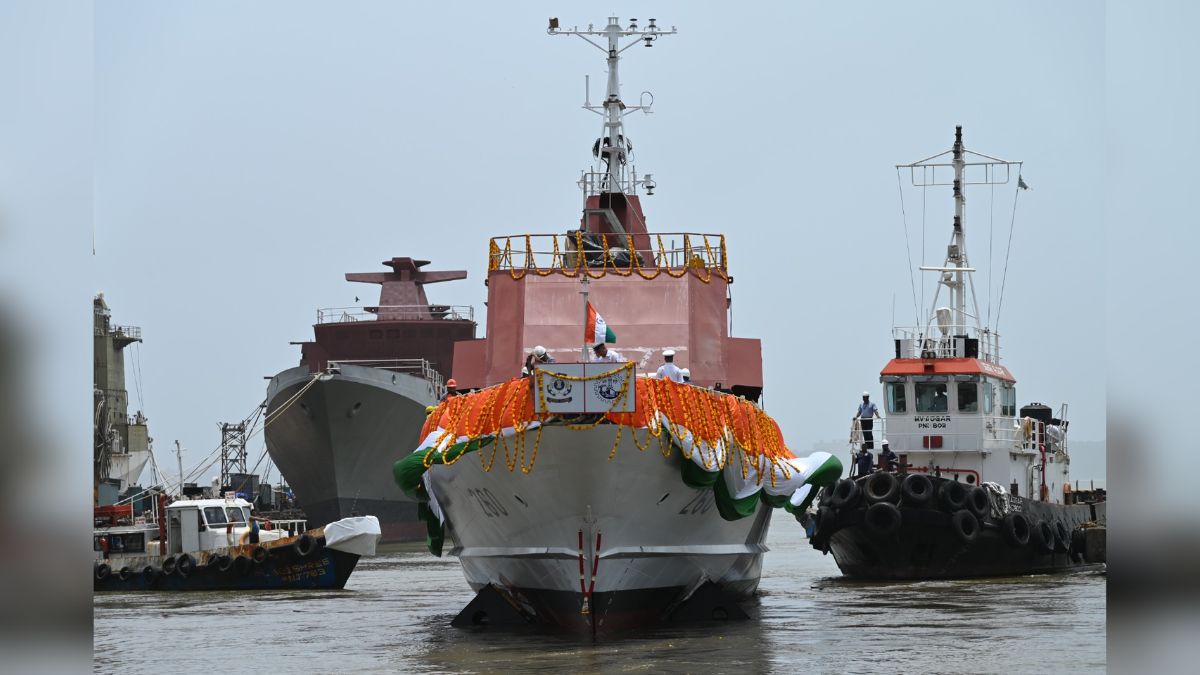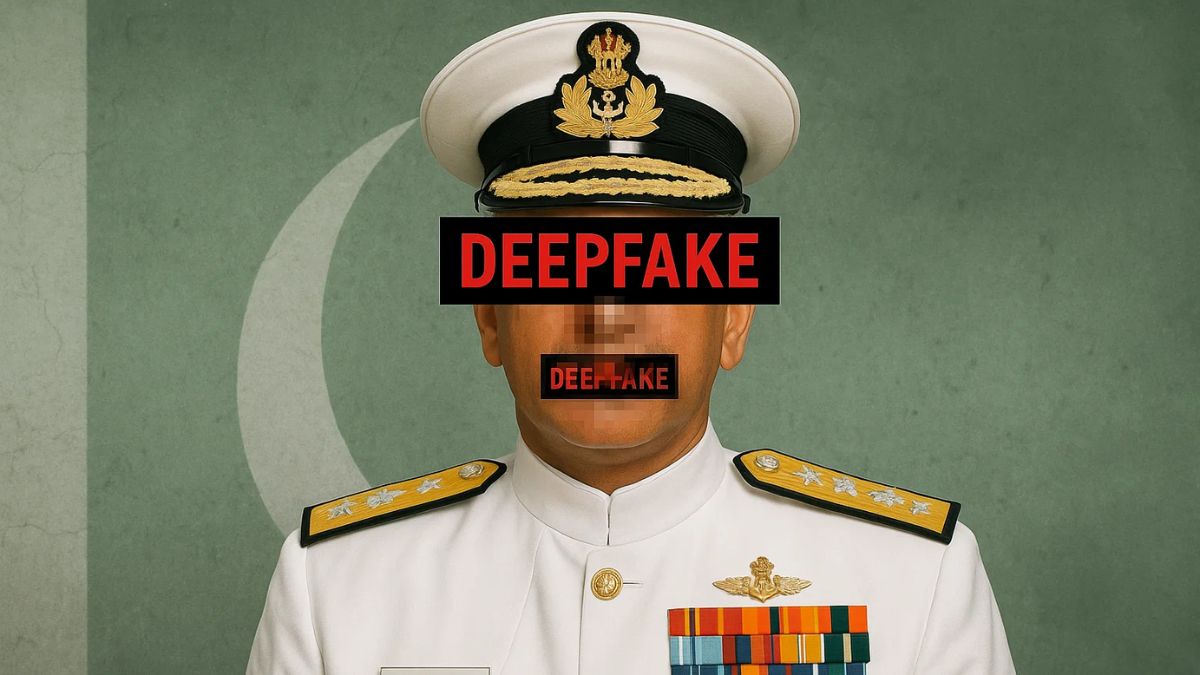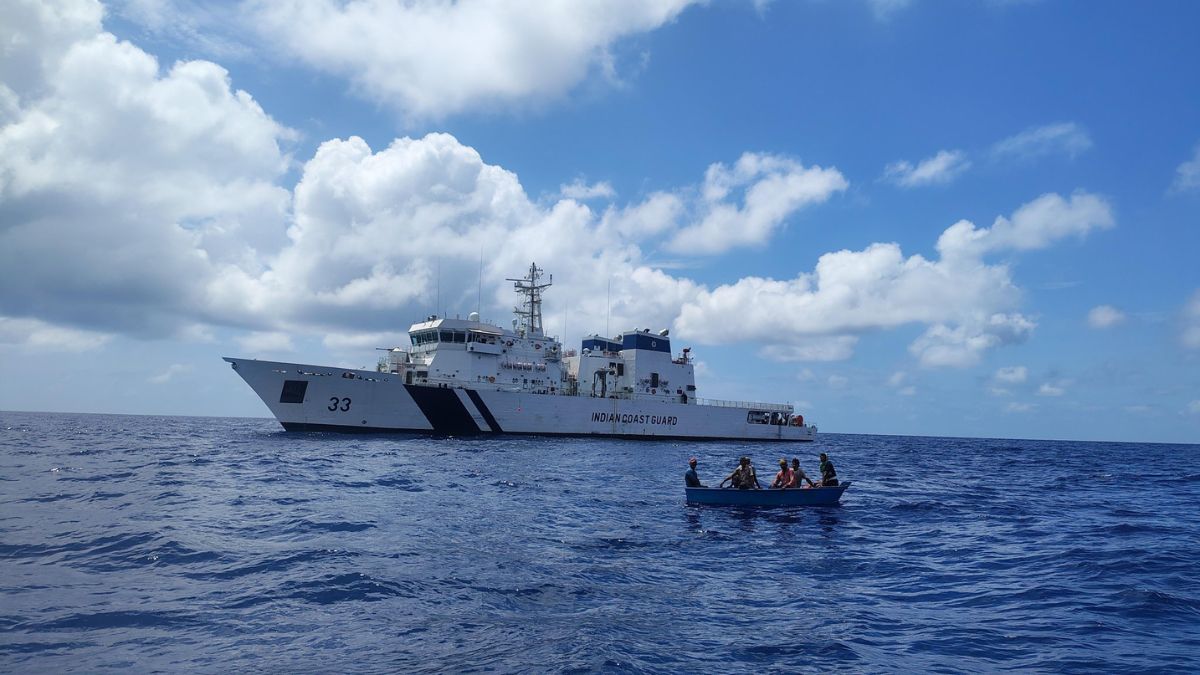Indian Coast Guard Launches Fifth FPV ‘Achal’ Amid Push For Indigenous Shipbuilding

‘Achal’, the fifth Fast Patrol Vessel (FPV) in a series of eight being constructed by Goa Shipyard Ltd (GSL) for the Indian Coast Guard (ICG), was ceremoniously launched on June 16 in Goa. Image courtesy: PIB
India’s maritime security infrastructure received a fresh boost on Monday (June 16)c, with the launch of ‘Achal’, the fifth Fast Patrol Vessel (FPV) in a series of eight being constructed by Goa Shipyard Ltd (GSL) for the Indian Coast Guard.
Launched by Smt. Kavita Harbola at GSL’s Goa facility, the ceremony was attended by senior dignitaries including Additional Director General Anil Kumar Harbola, Commander of the Coast Guard’s Western Seaboard.
With more than 60% indigenous content and dual certification from the American Bureau of Shipping and Indian Register of Shipping, the FPV marks a milestone in India’s self-reliant defence manufacturing initiative.
What capabilities does the new FPV ‘Achal’ bring to the Indian Coast Guard fleet?
‘Achal’ is a 52-meter-long, 320-tonne Fast Patrol Vessel capable of speeds up to 27 knots. It features a controllable-pitch propeller (CPP) propulsion system and is engineered for offshore security missions. Its core roles include protection of oil platforms and island territories, coastal surveillance, anti-smuggling operations, and search and rescue missions.
The vessel’s construction aligns with stringent dual-class standards and showcases over 60% local sourcing, supporting the government’s Aatmanirbhar Bharat initiative.
What is the eight-vessel FPV program?
‘Achal’ is the fifth in an eight-vessel FPV series awarded to Goa Shipyard Ltd under a ₹473 crore contract. The first four vessels—‘Adamya’, ‘Akshar’, ‘Amulya’, and ‘Akshay’—were launched in October 2024 and January 2025. Notably, the simultaneous launch of ‘Amulya’ and ‘Akshay’ earlier this year marked a first in GSL’s history.
All vessels in the series share standard specifications: 52 meters in length, 8 meters in breadth, 320-tonne displacement, and high-speed performance.
How does this contribute to India’s coastal defence strategy and local industry?
The expansion of India’s FPV fleet is critical to safeguarding offshore energy assets and securing vast maritime zones. With 44 FPVs in active service across various classes such as Aadesh, Rajshree, and Rani Abbaka as of March 2025, the Indian Coast Guard continues to strengthen its high-speed response capability.
The FPV construction program has also delivered economic benefits—stimulating MSME activity and employment through contracts associated with local suppliers, reinforcing India’s defence-industrial base.







